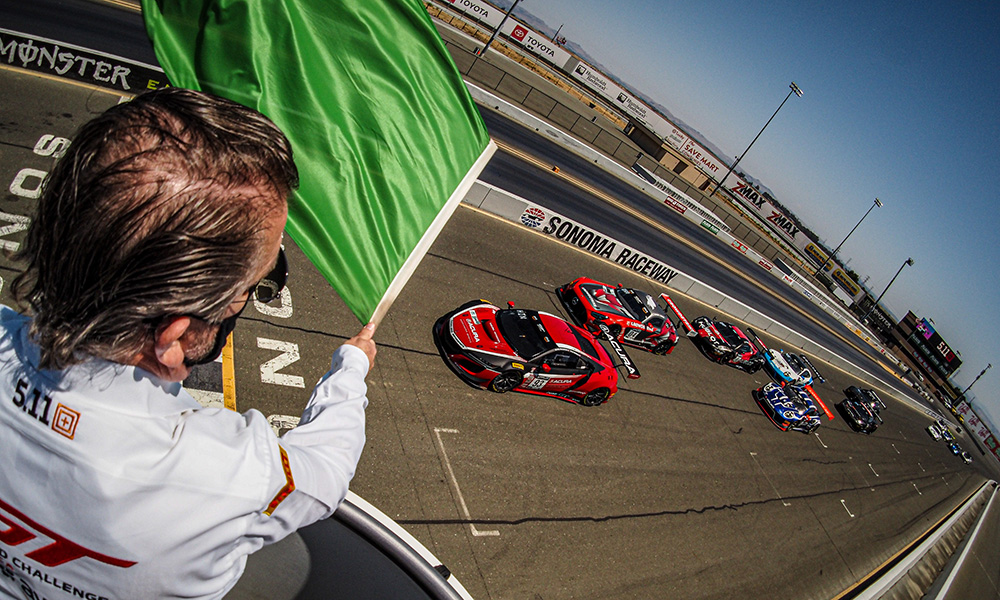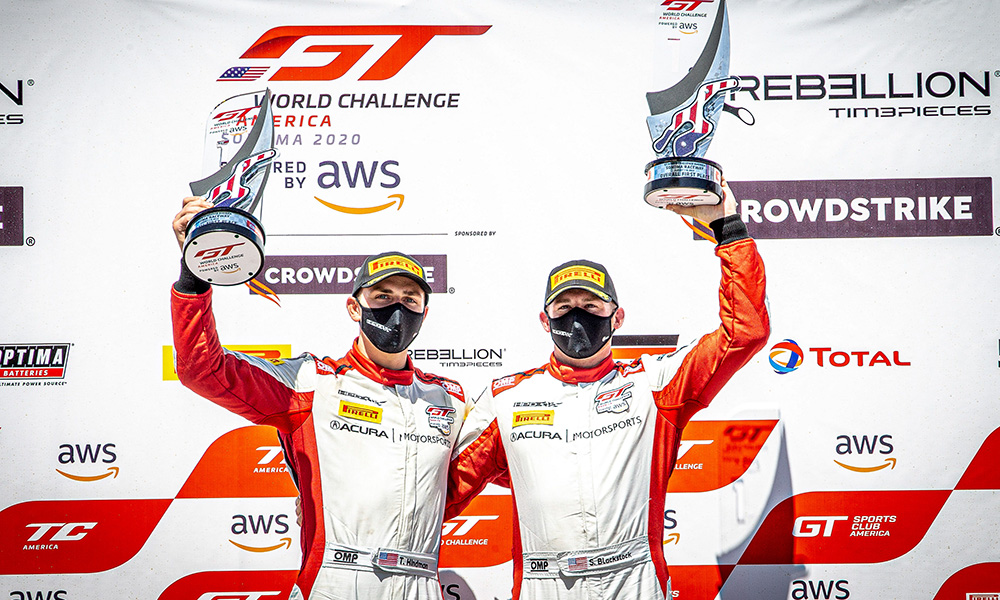
Photo: Brian Cleary/SRO
Following the unsettling glimpse into reality through the lens of a four month long quarantine, we now find ourselves about a month into a pretty much nonstop run of racing from early July through mid-November.
I count 15 race weekends in a span of roughly four months, at least on my calendar.
Tell anyone outside the motor racing bubble that you enjoy spending seven, maybe eight weeks in a row on the road before the odd weekend off and they’ll promptly assume you’ve lost your mind. Rightfully so.
I know for the folks that have made the decision to join the traveling circus, this is heaven – or at least to me it is.
Getting to compete on a weekly basis not only satisfies the addiction, but it also gives one (seemingly) endless opportunity to continue learning and developing upon past errors, even if the weekend prior was a resounding success.
But really, how often does it ever go perfectly to plan in this business?
Unless you’re in one of those silver-liveried cars on the grid in Formula 1, you can do everything right, have the quickest car, and still get bitten straight in the ass by some unavoidable coincidence.
And that, my friends, is the reason why we keep coming back, week after week, to put forth an excruciating effort towards becoming one of those all conquering teams that nobody can mess with, even on their best day and your worst.
Learning the process by which that level of performance and consistency is obtained seems, at least to me, one that only comes with time.
Hence why the nonstop schedule of running both SRO and IMSA this year, compacted all into a four-month span, is really a blessing in disguise.

Photo: Brian Cleary/SRO
There is enough time home in between events to evaluate and make adjustments, but not enough time to over-analyze or over-commit to any set approach before heading right back out, just to do it all over again.
Nobody ever mentioned anything about this being an easy pursuit. And that goes for drivers, mechanics, engineers… everybody.
This is all pretty metaphorical for our last two GT World Challenge America powered by AWS rounds, starting with VIR and the latest being Sonoma, before heading to Road America this weekend.
For the No. 93 Racers Edge Acura NSX team, speed was the least of our concerns.
I feel comfortable saying that, since the NSX GT3 Evo is a car that works incredibly well on the Pirelli DH series tire; more so than any other car/tire combination I’ve ever experienced driving on.
Of course, the outside influences on one’s speed – set-up, the dreaded BoP, and the nut behind the wheel – are going to play their roles, and that’s fine. The tire is the single most important performance component of any car, so as long as the only item connecting you to the road is happy, you’re most likely going to be as well.
Now, the age old saying of “the quickest car doesn’t always win” is absolutely true. And this is where repetition creates clarity, at least for me.
Competing week in, week out for the last seven weeks has proved to me, more than ever before, how incredibly difficult it is to win races. In any series. Period.
You hear about it from a lot of different people, almost to the point where your ears bleed, but it’s absolutely true. The depth of items that are completely out of your control as a team, in this sport, are almost too numerous to count.

Photo: Fabian Lagunas/SRO
Take GT World Challenge America, Sonoma Race 1, for example. Shelby did an excellent job in qualifying, grabbing the pole position.
He led every lap of his stint and the Racers Edge team was within half a second of the minimum pit stop time, sending us right back out into the lead.
We set fastest race lap just after our stop… everything was perfect in terms of our execution. So you can imagine my reaction in the car when I received the radio call to come on down pit lane for a second time to serve a stop and hold penalty.
Keep in mind this is the second race in a row with a pit lane violation that led us to a penalty so all I was thinking about when I first got in the car was redemption (don’t F this one up, Trent) after the penalty during Race 2 at VIR.
Anyway, we served the penalty and continued on to a disappointing result.
The error occurred through a poorly communicated pit stop window time change that was made before the weekend ever began. I think most teams became aware of such a rules change after we in the No. 93 got nailed with the penalty almost immediately after our stop.
We just so happened to be the lucky ones leading at the time and following protocol in races past. Sort of a crash test dummy, if you will.
Frankly, it’s nobody’s fault. Wrong place, wrong time is all too common in motor racing, and it doesn’t even have to be in the sense of a physical, on track incident.
But this is exactly the reason why I’m grateful that we had the opportunity to immediately get back on track the next day.
There’s at least a chance to change your fortunes and leave that particular race weekend with some level of dignity. Luckily Race 2 for the No. 93 Acura was an overall win by 45 seconds.
Thinking out loud is one of my favorite past times, and I’m pretty sure that’s exactly what I can chalk the last 1000 words up to being.
In summary, I’m grateful to be racing again, and more importantly, continuing to learn how to win.
Thank you Jon Mirachi and the Racer’s Edge team, as well as Lee and his team at Acura Motorsports for making that learning curve a possibility.

Photo: Brian Cleary/SRO

























